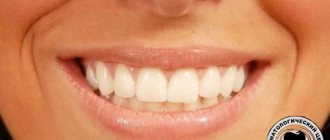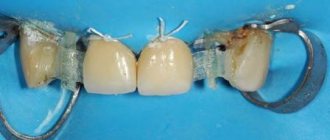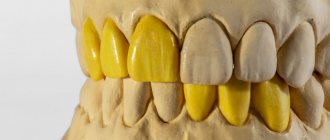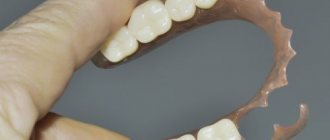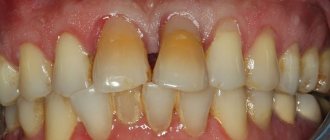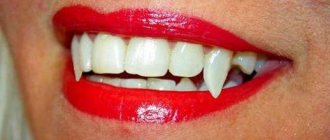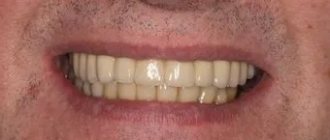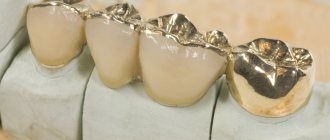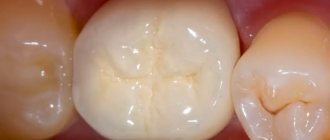Like any dental structure, crowns have their own service life. When the crown no longer serves its functional purpose, it will need to be removed and removed. There are also unforeseen situations that require immediate crown removal. So, in what cases is crown extraction necessary?
- The tooth was not properly prepared for a crown. If the filling quality is poor, there is a high chance of inflammatory processes occurring. When a patient presents with severe pain under a crown and re-treatment is required or even at risk of tooth extraction, the crown will have to be removed.
- The cement on which the crown was attached was destroyed. If it is impossible to restore the cement without removing the crown, it will need to be removed.
- In the case when quite a lot of time has passed after the installation of the crown and its service life has come to an end, there is a need for re-prosthetics. Re-prosthetics are also possible if the patient wants to replace his old crown with a modern and more aesthetically acceptable one.
- If a defect in the manufacture of the crown is detected, for example, when it does not cover the neck of the tooth tightly enough or negatively affects the bite.
- If the crown becomes loose or falls out.
Why do you need to remove crowns?
- The need to treat the tooth that is under the crown. Painful sensations and an unpleasant odor are signs of the development of pulpitis or even periodontitis (if the tooth has not been depulped). Most often, treatment occurs without removing the crown, but everything depends on the qualifications of the doctor and the clinical case. A hole is drilled in the crown through which diagnosis and treatment are carried out.
- Destruction of the material on which the crown was installed. The orthopedic structure begins to wobble, causing discomfort while eating and talking. Sometimes, in order to re-fix the crown, you can do without damaging the orthopedic structure.
- Re-prosthetics. These are cases when patients themselves want to replace them with a better quality crown.
- Poor quality design. If the crown is cracked or does not fit well to the neck of the tooth and affects the bite, it must be replaced with a new one.
- The service life has expired.
Rules
Removing stamped crowns requires the dentist to be careful, since the procedure can easily injure the soft tissues in the neck of the tooth. There are two methods of carrying out.
- Using a scaler or crown remover. Stamped crowns have thin walls, so it is often possible to remove them entirely after first destroying the cement.
- Sawing with a dental bur. They make an incision from the edge of the microprosthesis to the chewing surface of the tooth or vertically saw through the wall.
The choice of removal method depends on the location of the crown and the condition of the fixing cement.
How does the withdrawal take place?
The procedure for removing a dental crown can be done in different ways. The most common of them is using the Koch apparatus. This device is placed in the patient's mouth, and by applying pressure to the edge of the crown, the crown is “displaced” without pain or damage. This method is often used when the patient wants to keep the dental crown intact. If the integrity of the crown is not so important, you can remove the crown by simply sawing it. This method often frightens patients, since the preparation process is quite complicated. During filing, ultrasound is applied to the tooth, causing the material to crack, allowing the tooth to be freed. Sawing severely damages the structure, so installing the same crown will not be possible.
You can carefully remove the crown using the Coronaflex device. The orthopedic design completely retains its shape, so it can be reinstalled.
Options for solving problems that arise when removing orthopedic structures
All over the world, leading manufacturing companies are carrying out innovative developments of instruments for removing crowns and bridges from supporting teeth. These crowns and bridges can be cast metal, metal-ceramic, porcelain, or composite resin restorations. While removing temporary bridges and crowns is a fairly simple procedure, removing permanent crowns cemented with permanent cement requires more experience. To remove temporary bridges and crowns, instruments such as a scaler, spatula, excavator, forceps or hemostat are usually used, applying a force parallel to the axis of the tooth. The crown or bridge is gently rocked until the cement joint is broken. The restoration can be easily and safely removed due to the weak strength characteristics of the cement base.
Unfortunately, routine removal of temporary restorations is not suitable for permanently defective crowns and bridges that must be removed and replaced with new ones. Using the same technique as for temporary restorations is fraught with dangerous consequences. There are many specially designed tools for removing crowns and bridges, such as spring crown pullers, pneumatic crown pullers, and manual pullers that use mechanical force. But the use of these instruments can cause significant damage to the hard tissues of the teeth. When removing a crown or bridge, the doctor usually does not know what kind of cement was used to install it. Whether glass ionomer cements are used or standard zinc phosphate cements, the primary goal is to avoid damage to the abutment tooth, periodontal system, and adjacent soft tissue. Even with careful use of forceps, there is a risk of injury to teeth. Dentists often witness when, when removing defective crowns and bridges, the crown part of the supporting tooth(s) breaks, the root or tooth breaks, or is completely removed. Many novice doctors do not know exactly how much force needs to be applied when knocking down crowns, and how much more teeth need to be “damaged” in order to understand where the threshold of the maximum applied force is, beyond which the destruction of supporting teeth occurs. That is why a rational, predictable and effective technique for the safe removal of defective crowns and bridges is proposed. Let us consider the basic principles of this technique.
When sawing an installed crown, you must remember:
1) Sawing should always be carried out with abundant irrigation of the working area with water.
2) The first cut is made with a coarse diamond bur in order to determine the metal of the crown and remove the ceramic layer in the preparation area as quickly and efficiently as possible.
3) When sawing the crown into pieces, it is unacceptable to touch the hard tissues of the tooth, which can create a risk of damage to the tooth during subsequent removal of the crown with a hand tool, as well as weakening the supporting tooth as a whole.
4) Before removing the crown, it is necessary to make a complete cut so that the metal isthmuses do not interfere with further removal of the crown. For sawing metal, it is recommended to use carbide burs, such as the Great White series burs.
It is also very convenient to use burs for sawing metal (Fig. 1).
When sawing metal, it is necessary to work especially carefully in the gum area. In order not to damage the soft and hard tissues in the cervical area, it is recommended to saw the remaining bridge of the frame with a small spherical carbide bur (Fig. 2), holding the mucous membrane with a special gingival retractor (Fig. 3).
Rice. 1-3
Once the crown has been sawed along the buccal-occlusal surface, various tools are available to spread the edges of the crown (Fig. 4, 5).
Rice. 4, 5
You can also use modern special tools (Fig. 6).
Rice. 6
Christensen Crown Remover for the frontal or chewing group of teeth. The flat tip of the tool is carefully inserted into the front cut of the divided crown and then the boundaries of the cut are moved apart in different directions (Fig. 7).
The sharp working part of the Christensen Crown Remover tool and the convenient shape of the handles allow you to quickly destroy the cement base and remove the crown. This tool was developed by Dr. Gordon Christensen.
Also, for a similar technique, you can use a tool similar in action - Goldstein Crown Remover, which exists in 3 versions (Fig. 8).
Usually it is enough to make a cut to the border with the chewing surface. For frontal teeth, mobile teeth of the chewing group, as well as in the case of sawing frames with a large thickness of metal, it is necessary to make a cut to the middle of the crown, and sometimes through the entire crown. Next, the crown is easily removed using a hand digger (Fig. 9) or a hemostat.
Rice. 8, 9
Application Report
Patient N., 47 years old. In the oral cavity there is a metal-ceramic bridge prosthesis for teeth 17-14 (Fig. 10). It was decided to remove the bridge due to overload of the supporting teeth, as well as non-compliance with modern aesthetic requirements. The patient was warned that during the process of removing the crowns, the sounds of ceramics breaking off from the metal base would be heard.
In the future, it is planned to undergo dental implantation in the area of 15 and 16 teeth, followed by prosthetics, as well as the production of single crowns for teeth 14 and 17. Before removing the bridge, a reinforced temporary acrylic structure was made.
Using the method described above, we cut the crowns of teeth 14 and 17 (Fig. 12, 13).
Rice. 12, 13
Depending on the location of the tooth, we use a straight or angular crown remover. In this situation, the use of a direct crown remover is recommended. (Fig. 14).
Rice. 14
When working in the area of the chewing group of teeth, it is more convenient to use an angular crown remover. (Fig. 15).
Rice. 15
After spreading the edges of the supporting teeth frames (Fig. 16), the bridge is removed using a hand-held digger (Fig. 17, 18), using various attachments included in the kit.
Rice. 16-18
Carrying out the manipulations described above allows you to remove the orthopedic bridge structure with the minimum possible risk of damage to the supporting teeth (Fig. 19).
Rice. 19
The set goal (removal of the old bridge structure) was achieved (Fig. 20).
Rice. 20
The patient was fitted with and fixed a temporary structure on the abutment teeth (Fig. 21), the facets were deliberately reduced in height (Fig. 22), which is associated with the upcoming operation of directed osseointegration in the area of the 15th, 16th teeth.
Rice. 21, 22
conclusions
If a decision is made in favor of removing a crown or bridge, then it is necessary to carry out this procedure as safely as possible for the supporting teeth. This is supported by modern tools and materials developed by the world's leading manufacturers.
Preliminary consultation and treatment planning
After the patient and specialist determine the type of prosthesis that will be installed, they begin to select the material used for its manufacture.
The most common and popular are metal-ceramic prostheses. You can also make a prosthesis from metal, porcelain or gold. Zirconium ceramics and aluminum oxide are also popular and very durable.
Let's look at the stages of installing dental bridges:
- Examination of teeth and jaw.
- If necessary, treatment of teeth and gums is performed.
- Introduction of anesthesia.
- Preparation of supporting teeth (most often grinding them).
- Casts and x-rays of the opposite row of teeth, as well as supporting teeth.
- Making a model of a prosthesis from plaster and trying it on.
- Choice of crown color. At this stage it is excellent to work with ceramics, since this material allows you to choose the most suitable shade of color.
- Creating a temporary bridge that will protect the teeth from external irritants before making a permanent one.
- Making a permanent bridge.
- Installation and cementation of the prosthesis.
Metal-ceramic dental bridge - indications for installation
This type of prosthesis is designed to restore a fragment of the dentition (usually from one to four teeth). It is already difficult to use a dental bridge for 5 teeth made of metal-ceramics, since to attach a classic prosthesis, two supporting crowns are added, which are placed on natural teeth. A dental bridge made of metal ceramics can be installed on 4 teeth. However, the best option is to replace two or three teeth: in this case, good functionality is ensured and some of the disadvantages of metal-ceramic dentures, which are described below, can be hidden. Despite the fact that metal-ceramic structures are in great demand, they have a number of contraindications that exclude or limit their use.
Is it possible to remove one or more crowns at home?
Sometimes unforeseen circumstances occur when a person experiences such severe toothache that he can no longer endure it. For this reason, he takes emergency measures and tries to remove the crown himself without the intervention of a doctor. In most cases, such a process is impossible at home due to the lack of special devices, devices and the patient’s dental practice.
Removal of the metal-ceramic structure occurs exclusively in the doctor’s office. An exception may be cases when it is loose and can be easily unfastened at home along with the remains of the cementitious substance by picking it out.
